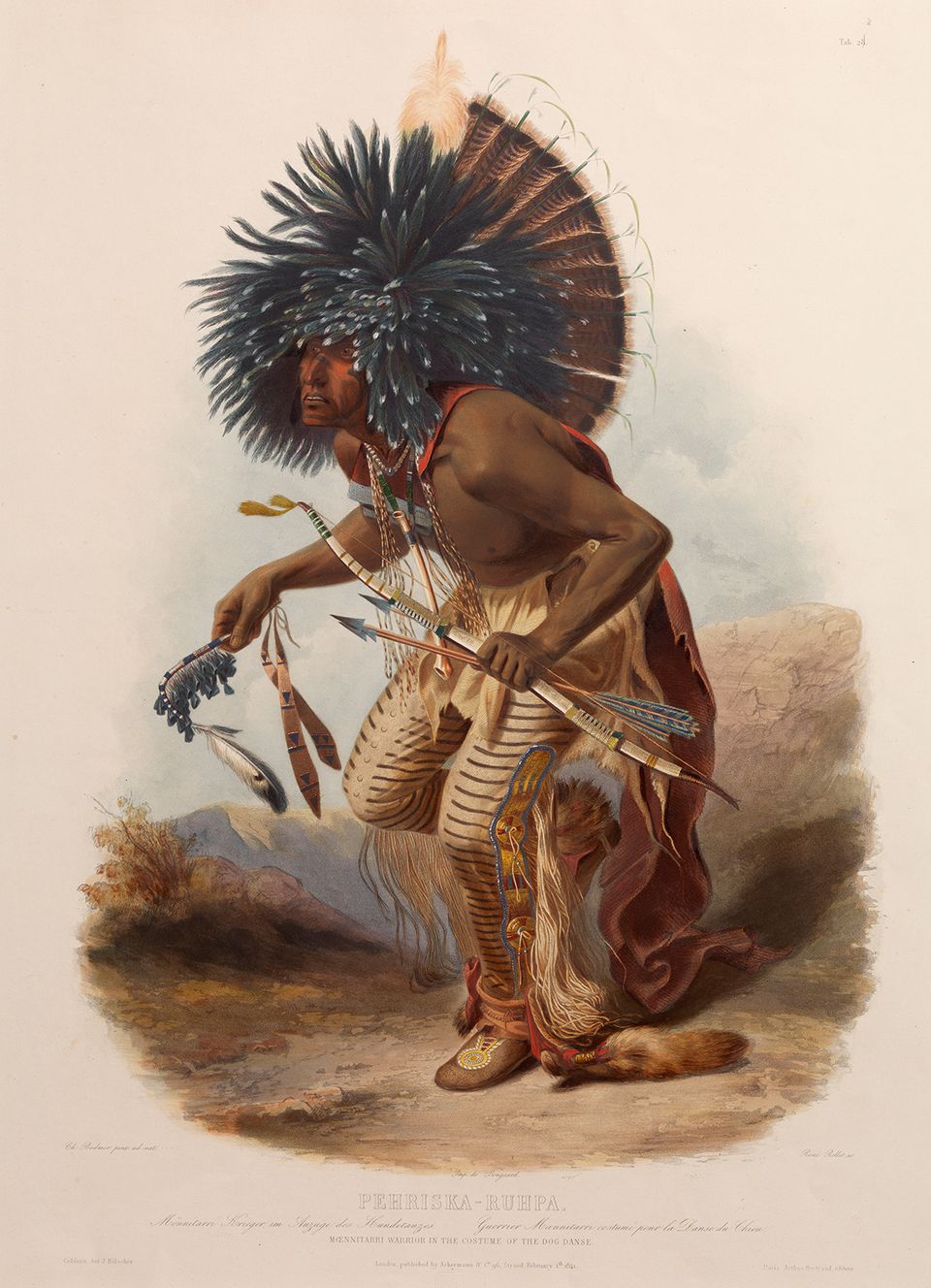
After Karl Bodmer, Louis René Lucien Rollet, engraver, Pehriska-Ruhpa, Moennitarri Warrior in the Costume of the Dog Dance, 1841, aquatint and engraving on paper, plate mark: 21 1/16 x 15 1/4 in., image: 18 5/16 x 13 1/8 in., Joslyn Art Museum, Omaha, Nebraska, Gift of the Enron Art Foundation, 1986.49.542.23, Photograph © Bruce M. White, 2019.
About the Artwork
Péhriska-Rúhpa, also known as Two Ravens, was one of the tribal chiefs who permitted Prince Max and Bodmer access to his community’s ceremonies and lifeways. The Dog Dancers were considered the bravest warriors in the Minnetaree’s Dog Society, tasked with fighting to protect the tribe. The dance featured war maneuvers and was performed to bring success in battle. Max recorded in his journal,
Péhriska-Rúhpa spent several days with us, in order to have his portrait taken in his dress of one of the chiefs of the dog band. When the sitting was over, he always took off his ponderous feather cap, and rubbed it twice on each side of his head, a charm or precaution which he never neglected.













